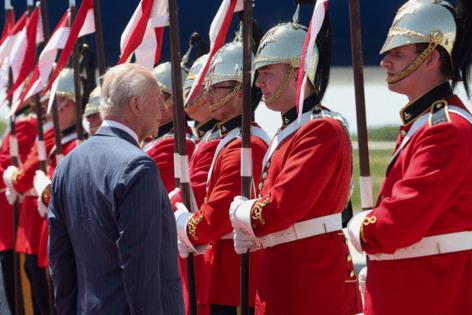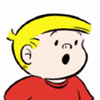King Charles delivers Carney's economic pledge to Canadian Parliament
Published in News & Features
OTTAWA, Canada — Prime Minister Mark Carney said he intends to lead Canada to “the largest transformation of its economy since the Second World War,” in a speech delivered by King Charles III to open the new parliamentary session.
The throne speech, which sets out the government’s priorities for the new Parliament, put heavy emphasis on building new trade relationships — including with the U.S. The speech called the world “a dangerous and uncertain place,” and said Canada is “facing challenges that are unprecedented in our lifetimes.”
Carney and U.S. President Donald Trump “have begun defining a new economic and security relationship between Canada and the U.S., rooted in mutual respect and founded on common interests, to deliver transformational benefits for both sovereign nations,” the government said in the speech, which was almost entirely written by Carney’s office and delivered by the King.
“Canada is ready to build a coalition of like-minded countries that share its values, that believe in international co-operation and the free and open exchange of goods, services, and ideas,” the government said, adding Canada will demonstrate this plan when it hosts the Group of Seven leaders summit next month in Alberta.
“The government will protect Canada’s sovereignty by rebuilding, rearming, and reinvesting in the Canadian Armed Forces,” it said, putting emphasis on joining European partners in security projects and adding more military resources in Canada’s Arctic.
The unusual move to have the sitting monarch read the throne speech — it last happened in 1977 — is widely seen as a message to Trump, who has repeatedly said he wants to see Canada as the 51st state.
In the introduction to the speech, King Charles added some personal reflection, noting this was his 20th trip to Canada and that every time he visits, “a little more of Canada seeps into my bloodstream – and from there straight to my heart.”
“The Crown has for so long been a symbol of unity for Canada,” King Charles said. “It also represents stability and continuity from the past to the present.”
The King’s visit is meant to highlight Canada’s own history of constitutional monarchy and parliamentary democracy, a contrast to the American presidential system.
Downtown Ottawa was essentially locked down for the pomp and circumstance of the morning, as King Charles and Queen Camilla were brought by horse-drawn carriage down the street in front of Parliament with crowds of people lined up along the route.
A 21-gun salute boomed for the King’s arrival at the Senate building, and he inspected a military honor guard before heading inside to deliver the speech. Once inside, the King and Queen sat on intricately designed walnut thrones adorned with symbols of Canada and the monarchy.
Former prime ministers Justin Trudeau and Stephen Harper were on the floor of the chamber to watch the speech, along with Supreme Court judges and other Canadian officials and dignitaries.
The bulk of the speech reiterated promises from the election campaign, which concluded April 28 and gave Carney’s Liberal Party a minority government — meaning they still need support from one other party in Parliament to pass votes.
Those promises include a broad-based income tax cut, removing the federal sales tax on some new homes and creating a new agency to have the federal government build more affordable housing in Canada. “The government will drive supply up to bring housing costs down,” the speech said.
The speech also put heavy emphasis on measures to “build the strongest economy in the G-7,” and pledging to speed up approvals of new energy and infrastructure projects, and to introduce legislation “to remove all remaining federal barriers to internal trade and labor mobility by Canada Day,” which is July 1.
©2025 Bloomberg L.P. Visit bloomberg.com. Distributed by Tribune Content Agency, LLC.







Comments